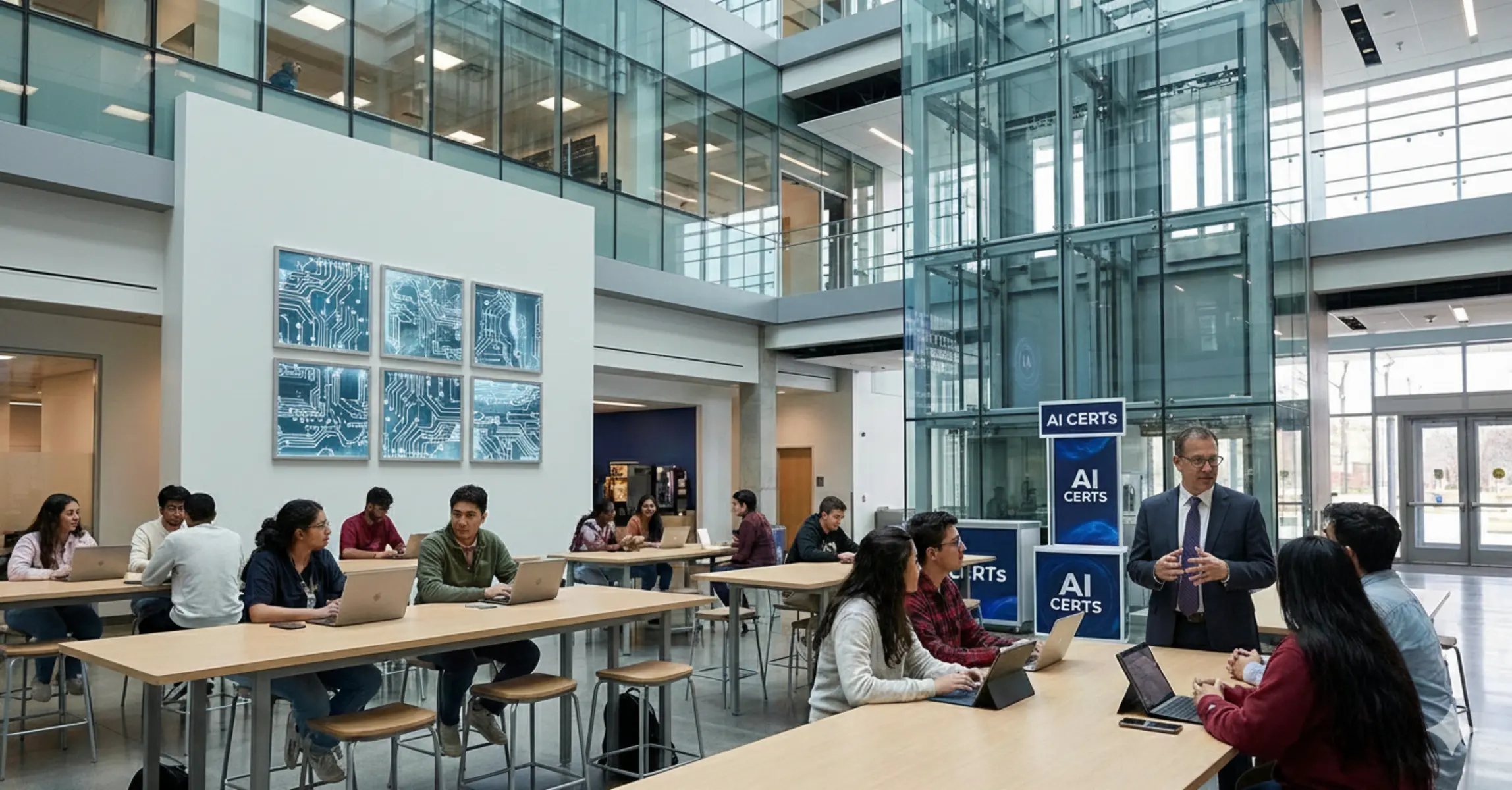The Lifecycle of an Authorized Training Partner: From Signup to Success
In the fast-evolving world of AI education, partnerships are becoming the foundation of scalability and credibility. Becoming an authorized training partner (ATP) gives institutes, educators, and entrepreneurs a structured pathway to offer globally recognized AI training programs. However, joining a certification network is only the beginning — true success comes from understanding the full lifecycle of a partnership.
From signing up and onboarding to managing learners and expanding your reach, every phase plays a vital role in shaping your long-term growth. In this detailed guide, we’ll walk you through the entire ATP lifecycle, explain what to expect at each stage, and share how to leverage your partnership to achieve sustainable success.
The Decision — Why Become an Authorized Training Partner
Before signing up, every potential partner must evaluate why they want to join an ATP ecosystem. The answer usually lies in credibility, scalability, and access to structured AI training programs.
Independent institutes often struggle to maintain course quality, update content, or gain recognition. Consequently, aligning with a trusted certification organization solves these challenges immediately. It ensures your programs meet industry standards and learners receive verifiable credentials that hold real market value.
Moreover, being an authorized training partner allows you to use official branding, approved courseware, and standardized assessments — factors that build learner trust. Additionally, your trainers gain access to enablement resources and ongoing professional development.
Therefore, if your goal is to grow sustainably and reach enterprise clients faster, partnering with an established AI certification body is a strategic decision. It’s not just about affiliation; it’s about transforming your business model into one built for scale and credibility.
Application and Onboarding
Once you decide to become a partner, the next step is completing the application and onboarding process. Typically, this involves sharing your institute’s profile, facilities, trainer qualifications, and operational readiness.
Moreover, most organizations conduct a short evaluation or orientation to ensure alignment with their brand and delivery standards. During this phase, your team may receive training on approved course materials, LMS systems, and administrative processes. Consequently, this helps maintain a consistent learner experience across all authorized centers.
In addition, you’ll receive digital assets like logos, marketing guidelines, and sample campaign templates to start promoting your partnership.
It’s crucial to approach onboarding proactively. Therefore, assign a dedicated partnership manager or internal lead to oversee compliance and coordination. The smoother your onboarding, the faster you can launch your first AI training programs and start generating revenue.
Program Launch and Market Entry
Launching your first AI certification batch marks a major milestone. However, this stage requires careful preparation and strategic marketing.
First, focus on setting clear program objectives — what roles are your learners preparing for? Whether it’s AI developers, data analysts, or business professionals, defining outcomes ensures clarity in your marketing and delivery.
Moreover, leverage your new authorized training partner status to build visibility. Include the ATP logo on all course pages, brochures, and advertisements. Highlight co-branded certifications and emphasize that learners will receive globally recognized credentials.
In addition, host launch webinars or open-house sessions to engage potential students. Invite industry experts or your partner’s representatives to speak — this adds legitimacy and excitement.
Operationally, ensure that your LMS, trainers, and feedback channels are ready. Consistency in delivery during the first few cohorts is critical because it defines your reputation.
Consequently, collect testimonials and case studies early on. These authentic success stories will become your most powerful marketing assets for future cohorts and enterprise deals.
Continuous Quality Management
Success as an authorized training partner depends heavily on maintaining quality over time. Therefore, focus on continuous improvement — both in academic delivery and learner engagement.
Conduct regular feedback surveys after each batch. Moreover, analyze metrics such as completion rates, satisfaction scores, and post-certification employment outcomes. These insights help you identify areas for refinement.
In addition, coordinate with your certification body to access updated courseware, new modules, and technology integrations. AI evolves rapidly; consequently, your programs must stay current to remain competitive.
Furthermore, invest in trainer upskilling. Encourage your faculty to attend refresher sessions, earn new credentials, or participate in AI innovation forums. A well-trained teaching team not only enhances learning outcomes but also strengthens your reputation as a reliable ATP.
Finally, document your quality assurance process. This transparency demonstrates professionalism and can help you secure larger institutional or government training contracts.
Scaling Your Business and Expanding Offering
Once you’ve mastered operational consistency, it’s time to scale. Expansion can take several forms — geographical growth, new course launches, or corporate partnerships.
Moreover, leverage your partner ecosystem. Many certification bodies offer referral programs, co-marketing campaigns, and cross-country collaborations. Consequently, you can expand your reach without significantly increasing your marketing spend.
In addition, consider offering specialization tracks or advanced-level AI training programs. These appeal to working professionals seeking career advancement and typically deliver higher profit margins.
Another powerful strategy is to integrate your offerings into enterprise learning pathways. Partner with corporate L&D departments to deliver customized programs that align with their AI adoption goals.
Therefore, scaling is not just about increasing numbers; it’s about deepening relationships and diversifying value. The stronger your network and partnerships become, the more resilient your business will be in a competitive market.
Partner Recognition and Ecosystem Involvement
As your success grows, your certification provider will likely recognize your achievements. Many ATP ecosystems offer tiered statuses like Silver, Gold, or Platinum levels — each with additional benefits.
Moreover, high-performing partners are often featured in newsletters, websites, and industry events. Consequently, this visibility boosts your credibility further and attracts even more clients.
To sustain this momentum, stay actively engaged in your ATP community. Attend partner meetups, webinars, and innovation forums. Share your best practices and success stories — these contributions strengthen your relationship with the network and position you as a thought leader.
In addition, nominate your trainers or students for excellence awards if your ATP program offers them. Recognition not only motivates your team but also becomes a compelling marketing advantage for your future campaigns.
Long-Term Growth and Evolution
The lifecycle doesn’t end once you reach recognition; it evolves continuously. As technology and learner demands shift, so must your offerings.
Therefore, invest in innovation — integrate AI-driven analytics, personalized learning experiences, and hybrid delivery models. Moreover, consider launching your own sub-partnerships or micro-franchise programs under your ATP umbrella.
If you plan to become a partner with multiple AI organizations, ensure alignment with your existing brand identity and learner outcomes. Diversifying partnerships can broaden your audience while maintaining consistency in quality.
Ultimately, the most successful ATPs are those that evolve beyond course delivery — becoming true ecosystem builders who shape how AI learning is delivered globally.
Conclusion
The journey from signing up to becoming a thriving authorized training partner is a transformative one. Each stage — from onboarding and launch to scaling and recognition — contributes to a robust, future-ready business.
Moreover, success in this ecosystem depends on continuous learning, active collaboration, and a commitment to excellence. Therefore, treat your partnership not as a static agreement but as a living relationship that grows with innovation and effort.
By offering structured, outcome-driven AI training programs, you not only expand your institute’s impact but also contribute to global AI skill development.
Recent Blogs

FEATURED
Why AI Centers of Excellence Are Becoming Essential for Modern Campuses
December 10, 2025
FEATURED
How Colleges Can Strengthen Accreditation with AI Certification Programs
December 9, 2025
FEATURED
Why AI Education Is the Future of Institutional Branding
December 9, 2025
FEATURED
The Partner Playbook: How to Increase Admissions Using AI Programs
December 9, 2025
FEATURED
Primary Care Doctors Report Time Savings and Better Care Thanks to AI Integration
December 9, 2025

